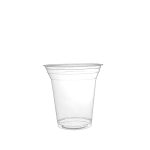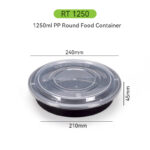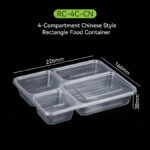Introduction: Balancing Sustainability and Functionality
In the global food packaging industry, sustainability is no longer just a trend—it’s a requirement. While kraft paper bowls are gaining popularity for their compostability, plastic bowls (PP, PET, RPET) remain the backbone of food packaging worldwide. In 2025, businesses must strike a balance between eco-compliance, functionality, and cost efficiency.
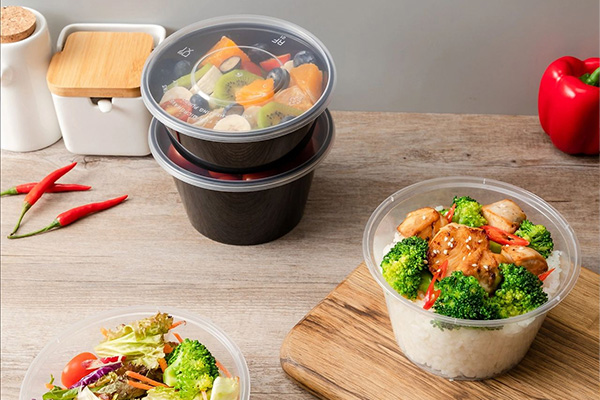
What Are Kraft Paper Bowls?
Kraft paper bowls are made from virgin wood pulp or recycled fiber, often coated with PLA, PE, or water-based linings to resist oil and moisture.
Features:
-
Food-grade and leak-resistant
-
Compostable under industrial conditions (depending on coating)
-
Printable with water-based inks
-
Popular for salads, soups, curries, and noodles
Limitations:
-
Heat resistance only up to ~100°C
-
Sensitive to humidity during storage and transport
-
Coatings (PLA/PE) make recycling more complex
What Are Plastic Bowls Made Of?
Plastic bowls are manufactured from petroleum-based or recycled polymers:
-
PP (Polypropylene): Microwave-safe, heat resistant up to 120°C, ideal for hot meals
-
PET (Polyethylene Terephthalate): Clear, lightweight, perfect for cold foods and salads
-
RPET (Recycled PET): Lower carbon footprint, widely used in retail and foodservice
-
PS/EPS (Polystyrene/Foam): Low-cost, but increasingly banned
Key Advantages:
✅ High durability and resistance
✅ Microwave and freezer safe (PP, PET)
✅ Global supply chain availability
✅ Recyclable in established systems (PET, PP, RPET)

Lifecycle and Carbon Perspective
-
Kraft Paper Bowls: Lower carbon footprint at raw material stage (trees absorb CO₂), but coatings limit recyclability. Industrial composting infrastructure is not universally available.
-
Plastic Bowls: Traditional plastics have higher initial emissions, but recycled plastics like RPET and rPP reduce lifecycle impact. Plastic bowls are lightweight, durable, and can be efficiently recycled in closed-loop systems.
📊 Key Comparison:
-
Kraft: Compostable, but recycling challenges remain.
-
Plastic: Not biodegradable, but recyclable and reusable with lower long-term carbon impact through circular economy models.
Functional Performance Comparison
| Performance Metric | Kraft Paper Bowl | Plastic Bowl (PP/PET) |
|---|---|---|
| Heat Resistance | Up to 100°C | Up to 120°C (PP) |
| Microwave Safe | ⚠️ Limited | ✅ (PP) |
| Compostable | ✅ (certified) | ❌ (but recyclable) |
| Recyclable | ⚠️ Depends on lining | ✅ PET, PP, RPET |
| Transparency | ❌ | ✅ (PET/RPET) |
| Durability | Moderate | High |
🧠 Expert Tip: For hot, oily dishes, PP bowls remain the safest and most practical option.
Cost and Supply Chain Considerations
-
Kraft Paper Bowls: Higher cost per unit, affected by pulp supply fluctuations. Bulk orders required for cost-effectiveness.
-
Plastic Bowls: Stable global supply chain, scalable production, and competitive pricing. RPET and PP are now widely adopted by international QSRs and retailers.
Regulations and Compliance
-
Kraft Bowls: Generally allowed under plastic bans, but coatings may affect classification.
-
Plastic Bowls: EPS is restricted, but PP, PET, and RPET are still widely permitted and increasingly supported by recycling mandates in the EU, U.S., and Asia-Pacific.
Business Case: Why Brands Still Choose Plastic
Many global foodservice and retail chains continue to rely on PP and RPET bowls because they provide:
-
Consistent food safety performance (heat- and oil-resistant)
-
Stable cost and reliable supply chains
-
Custom branding options (clear lids, embossed logos, colors)
-
Sustainability pathways via recycling and closed-loop initiatives
Expert Insight
“The future of packaging is not about eliminating plastic entirely, but about using smarter plastics—recyclable and recycled materials that fit into a circular economy. Both kraft and plastic have their roles, but plastics remain essential for durability and scalability.”
— Prof. James Wong, Sustainable Packaging Researcher
Conclusion
Kraft paper bowls provide an eco-friendly image and compostability, but have limits in heat resistance, durability, and recycling.
Plastic bowls (especially PP and RPET):
✅ More heat- and oil-resistant
✅ Cost-efficient and globally available
✅ Recyclable in established systems
✅ Still the mainstream choice for large-scale foodservice
As a leading manufacturer of PP, PET, and RPET food packaging, we deliver solutions that balance safety, performance, and sustainability—helping businesses meet regulatory demands while ensuring customer satisfaction.
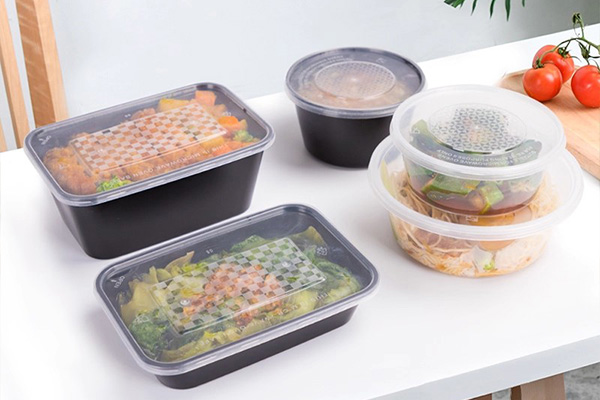
📌 FAQs
1. Are plastic bowls eco-friendly?
Yes—traditional plastics are fossil-based, but recycled plastics (RPET, rPP) significantly reduce carbon emissions and are widely supported by circular economy policies.
2. Are plastic bowls allowed under plastic bans?
EPS foam is banned in many regions, but PP, PET, and RPET are legal and encouraged when recyclable.
3. Can kraft paper bowls fully replace plastic?
Not in all applications. Kraft is good for light meals, but plastics remain better for hot, oily, or transport-heavy foods.
4. Are plastic bowls safe for microwaves?
PP bowls are microwave-safe and can handle temperatures above 120°C. PET bowls are safe for cold use.
5. Which is better for large-scale restaurant chains?
Plastic bowls (PP, RPET) due to their cost stability, performance, and recyclability.
📚 References
-
European Commission – Single-Use Plastics Directive
https://environment.ec.europa.eu/topics/plastics/single-use-plastics_en -
U.S. Environmental Protection Agency – Plastics Recycling Facts
https://www.epa.gov/facts-and-figures-about-materials-waste-and-recycling/plastics-material-specific-data -
Sustainable Packaging Coalition – Packaging and Circularity
https://sustainablepackaging.org/ -
FAO – Food Packaging and Sustainability
https://www.fao.org/3/ca5602en/ca5602en.pdf
Disclaimer & Copyright Notice
This article is created by the Dashan Packing editorial and research team.All information presented here is for educational and industry reference purposes only.Some data and standards cited in this article are sourced from publicly available materials,official regulatory documents, or third-party publications, which are properly credited where applicable.
All rights to third-party trademarks, images, and content belong to their respective owners.If any copyrighted material has been used inadvertently, please contact us at angel@chndashan.com.We respect intellectual property rights and will promptly remove or revise any material upon verification.


